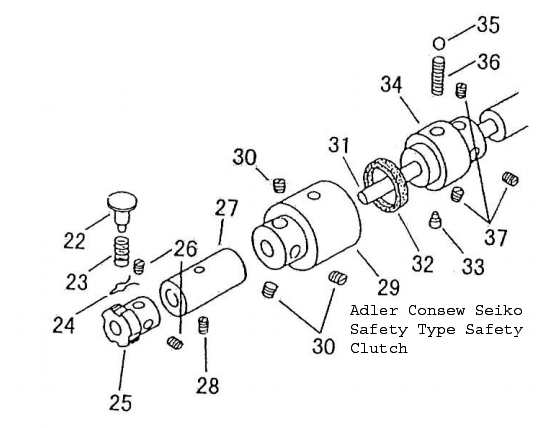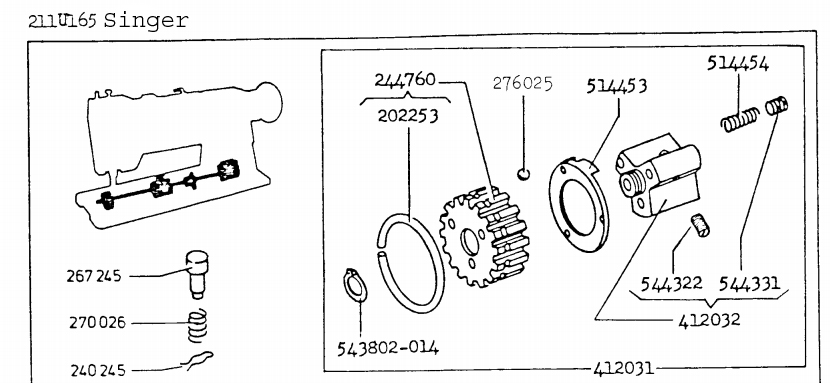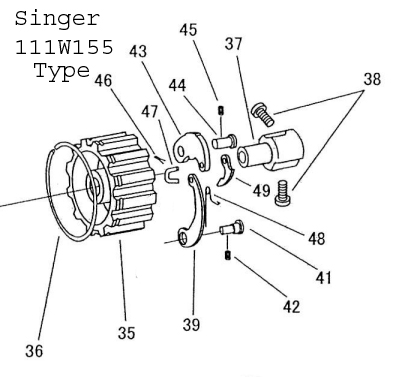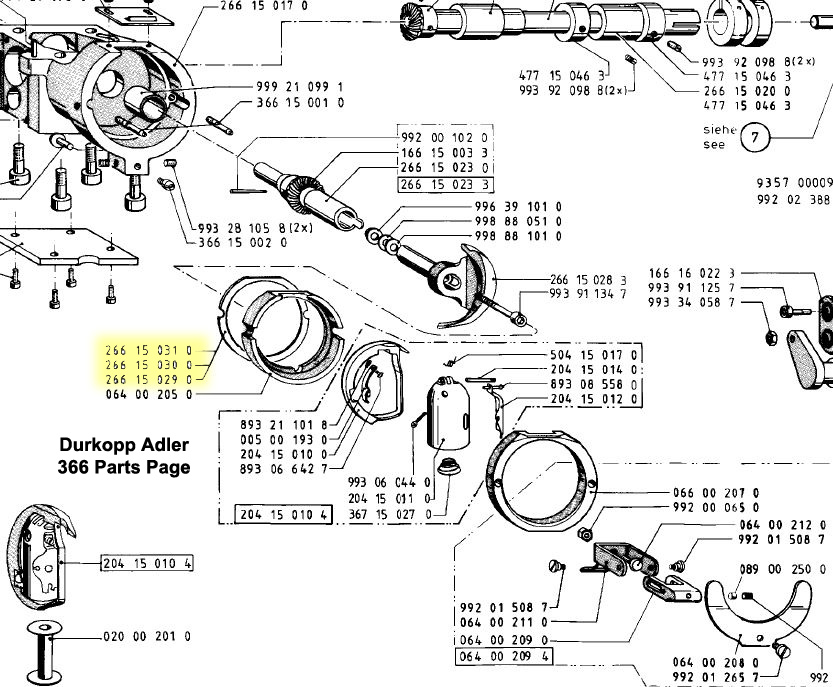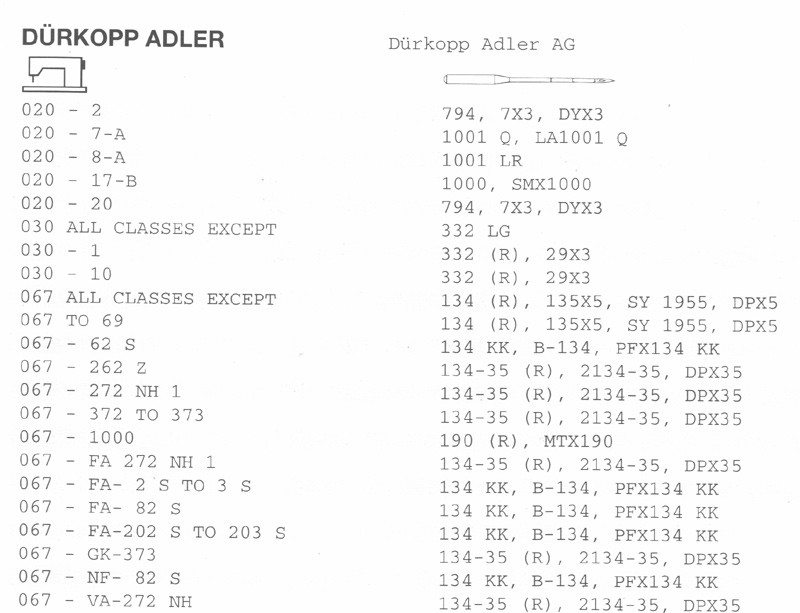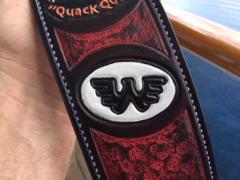-
Posts
1,212 -
Joined
-
Last visited
Content Type
Profiles
Forums
Events
Blogs
Gallery
Everything posted by Gregg From Keystone Sewing
-
-
Very interesting, I'll check my Singer books on these.
-

Pfaff 145 safety clutch understanding
Gregg From Keystone Sewing replied to Brtz's topic in Leather Sewing Machines
All I know is that the Pfaff safety clutch can be frustrating when it's not set correctly, to the point that I've seen many come in welded into one piece to make it a straight hook driving shaft. Here are some more opinions of mine, please feel free to add on or comment, please. My favorite type is the Adler type, also common on Seiko STH-8BL and Consew 206RB series as well. Juki DNU-241HS comes to mind as well. This is my favorite spring and ball clutch. Very reliable, and adjustable with the single adjusting screw. The second image has the Singer 211 type clutch. This was the least common, and least popular clutch I've seen, and for good reason. On paper, it looks pretty good. Until you have to go and use it. This is also a spring and ball type clutch, but the good stops there. We have three springs, balls, adjusting and check screws. Difficult to adjust correctly. I was taught to do one lose, one medium, and one tight. I don't know if this was the best way, at all. The other complete downside to this is that the stitch length was incorporated into the safety clutch. This eliminated the need for two confusing silver shinny buttons on the bed of the machine. But now, worst of all, the clutch is incorporated into the stitch length. It is not uncommon for an operator to disengage the clutch if you simply went too far either way adjusting the stitch length. And imagine if the stitch length regulator is messed up and loose? Singer 111W155 type appears on many, many makes and models, so I don't even want to start. This one works well, is reliable, and is nice in that the cog can spin free when the clutch is released and not engaged. The only downside is that the counter hook spring (index #48) that is about the thickness of a paper clip, likes to fly off and disappear. We then have to push, or hold the counter hook in place to rest the clutch. Again, these are just some opinions of mine, and I'm interested in what other may have to say.- 10 replies
-

Help adjusting Back-stitch length
Gregg From Keystone Sewing replied to lSherlockl's topic in Leather Sewing Machines
Uwe, I got this from the Consew 205RB-1 book. -

Help adjusting Back-stitch length
Gregg From Keystone Sewing replied to lSherlockl's topic in Leather Sewing Machines
-

Ferdinand 900b check it out
Gregg From Keystone Sewing replied to Old Coach Saddlery's topic in Leather Sewing Machines
LOL, just noticed the 'lucky' foot pedal. Very nice. -

Adjusting needle rocker to needle hole
Gregg From Keystone Sewing replied to Michiel's topic in Leather Sewing Machines
Adler 166 Owners Adler 166 Parts Adler 166 Brochure -

Adjusting needle rocker to needle hole
Gregg From Keystone Sewing replied to Michiel's topic in Leather Sewing Machines
Adler 166, 266, and 366 all use this same race. -

Adjusting needle rocker to needle hole
Gregg From Keystone Sewing replied to Michiel's topic in Leather Sewing Machines
We get quite a few Adler 166 machines in here for service, and stock some of the common items. It's a machine that comes up quite a bit here. Not in the 166-1 book, we use the race rings from, among others, the 366 parts book to move the hook closer to the needle. See below image. -

Sewing thread polyester vs bonded nylon
Gregg From Keystone Sewing replied to kgg's topic in Leather Sewing Machines
Here is the most information I've seen between the two, and I'm even more confused after reading and studying both. Polyester Thread Information.doc Nylon Thread Information.doc -
I'm very interested in finding out what model Singer that is. So far I've come up dry.
-
I scanned this book years ago, hard to find around the internet. 145 545.pdf
-

The planets are in alignment
Gregg From Keystone Sewing replied to DonInReno's topic in Leather Sewing Machines
Obviously only one way to find out...report back please! -

Does anyone recognize this Pfaff?
Gregg From Keystone Sewing replied to DrmCa's topic in Leather Sewing Machines
Very confident that's a chainstitch, two thread single needle. -

Guitar Strap for a close friend.
Gregg From Keystone Sewing commented on Firewalker's gallery image in Our Leatherwork Galleries
-

Something to Sing(er) about! :)
Gregg From Keystone Sewing replied to suzelle's topic in Leather Sewing Machines
Sorry I was trying to type desirable. -

Something to Sing(er) about! :)
Gregg From Keystone Sewing replied to suzelle's topic in Leather Sewing Machines
Singer 20U made in Japan is a very describable machine. -

Grease for Gears in Gearboxes
Gregg From Keystone Sewing replied to Scoutmom103's topic in Leather Sewing Machines
Tri-Flow has...magical properties. That said, we also us Castrol hi temp grease, for axle, disk breaks, stuff like that.- 28 replies
-
- grease
- industrial sewing machine
-
(and 1 more)
Tagged with:
-

Pfaff 545 Needle Question
Gregg From Keystone Sewing replied to Kryptonite's topic in Leather Sewing Machines
H4 has a higher lift, and needs the 190 system needles to work correctly here. H3 uses 134-35. If you go from one system to the next, you will have to change needle bar height (not hook timing). Shank is the same, but keep in mind the longer the needle, the more deflection. Ha, beat me by seconds! -
Thanks for the review, machine looks great.
-
Great stuff, really amazing UWE. I've got one motor supplier who provides both nominal and maximal torque for example here a DC1550 motor with nominal 1,9Nm, Maximal torque 8Nm. I have no idea how to apply that to a real world application, but I can tell you this motor is very powerful! You can visit this items product page here; https://www.efka.net/en/products/electric-motors/dc1550/
-

Lubrication on newer "dry head" machines
Gregg From Keystone Sewing replied to R8R's topic in Leather Sewing Machines
I found this floating around, this supplement is for this exactly, but still not 100 percent clear. 1500 Series Supplement on lubrication.pdf



